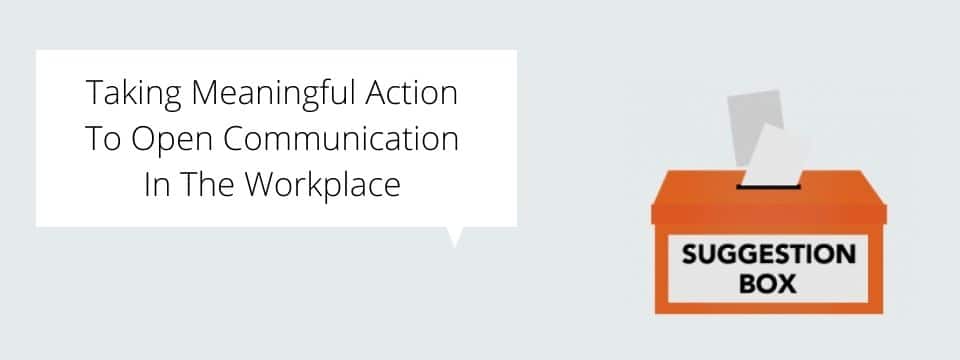
Saying your company supports open communication in the workplace and doing so are two different things. Creating policies and procedures is an important start, but it’s not the same as fostering an environment where employees feel empowered to engage in honest conversation, voicing needs and concerns openly.
Putting policy into practice is harder and more critical. If companies don’t take additional steps to ensure that their management practices align with corporate values, they risk alienating — and losing — valuable talent.
Here are some ways companies can support and engage with employees, both in-office and remotely, to create a better work environment for everyone.
Companies can’t solve problems they don’t know about. Ambiguous reporting structures, not knowing who to contact and concerns about blowback (or “throwing someone under the bus”) can perpetuate a culture of silence. This can unwittingly challenge a company’s desire to encourage people to speak up.
Address this head on by providing proactive guidance about communications channels, procedures and accountability as part of new hire onboarding and as a recurring training measure. Outline who, when and how to discuss common topics, and identify alternatives should employees encounter a roadblock.
The first point of contact for most employees is their direct manager, so ensure that all team leaders up to the executive suite are prepared to invite and engage in conversations directly. Buy-in from those in positions of influence is essential to shifting the workplace culture, especially when open communication is a new company priority.
Provide coaching and soft-skills training to executives and managers to get them on-board and ensure they can handle situations effectively. Touch base with all employees periodically to identify areas where more resources and accountability may be required.
Unhealthy organizations fear open communication. Exhibit confidence in your culture by creating space and opportunities for employee discussion and relationship-building across departments and position levels.
Provide a mix of on-site and virtual programs to give all staff a chance to interact. For example, HR can host networking events for people to get to know one another as more than just names on an organizational chart. There are many creative ways to host events that encourage participation and engagement. Companies can also offer professional development programs that not only enhance employee value but promote interaction too.
Mentoring programs can also promote direct communication across an organization. Pair senior and junior-level employees from different departments. Experienced staff can help others navigate workplace challenges, enable more effective communications with supervisors and assist in career advancement. Moreover, those in junior roles may feel more comfortable speaking freely with senior staff outside of their management line.
Another way to support communication is for company leaders to hold town hall events in which they actively listen, answer questions and hear directly from staff about the issues that impact their day-to-day work experience. However, providing an avenue for feedback alone is not enough. Companies must act and follow through on issues whenever possible, so employees feel heard and affect positive change.
Taking action to create and maintain a culture of open communication in the workplace is essential to building a healthy organization in which every employee feels valued and heard. Ensuring positive employee engagement improves overall job satisfaction, productivity and talent retention – and that’s good for business.